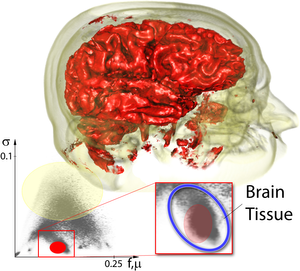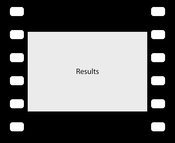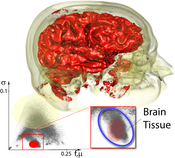Information
- Publication Type: Conference Paper
- Workgroup(s)/Project(s):
- Date: March 2010
- Lecturer: Martin Haidacher
- Booktitle: Proceedings of the IEEE Pacific Visualization 2010
- Conference date: 2. March 2010 – 5. March 2010
- Pages: 17 – 24
- Keywords: transfer function, statistics, shading, noisy data, classification
Abstract
It is a difficult task to design transfer functions for noisy data. In traditional transfer-function spaces, data values of different materials overlap. In this paper we introduce a novel statistical transfer-function space which in the presence of noise, separates different materials in volume data sets. Our method adaptively estimates statistical properties, i.e. the mean value and the standard deviation, of the data values in the neighborhood of each sample point. These properties are used to define a transfer-function space which enables the distinction of different materials. Additionally, we present a novel approach for interacting with our new transfer-function space which enables the design of transfer functions based on statistical properties. Furthermore, we demonstrate that statistical information can be applied to enhance visual appearance in the rendering process. We compare the new method with 1D, 2D, and LH transfer functions to demonstrate its usefulness.Additional Files and Images
Weblinks
No further information available.BibTeX
@inproceedings{haidacher_2010_statTF,
title = "Volume Visualization based on Statistical Transfer-Function
Spaces",
author = "Martin Haidacher and Daniel Patel and Stefan Bruckner and
Armin Kanitsar and Eduard Gr\"{o}ller",
year = "2010",
abstract = "It is a difficult task to design transfer functions for
noisy data. In traditional transfer-function spaces, data
values of different materials overlap. In this paper we
introduce a novel statistical transfer-function space which
in the presence of noise, separates different materials in
volume data sets. Our method adaptively estimates
statistical properties, i.e. the mean value and the standard
deviation, of the data values in the neighborhood of each
sample point. These properties are used to define a
transfer-function space which enables the distinction of
different materials. Additionally, we present a novel
approach for interacting with our new transfer-function
space which enables the design of transfer functions based
on statistical properties. Furthermore, we demonstrate that
statistical information can be applied to enhance visual
appearance in the rendering process. We compare the new
method with 1D, 2D, and LH transfer functions to demonstrate
its usefulness.",
month = mar,
booktitle = "Proceedings of the IEEE Pacific Visualization 2010",
pages = "17--24",
keywords = "transfer function, statistics, shading, noisy data,
classification",
URL = "https://www.cg.tuwien.ac.at/research/publications/2010/haidacher_2010_statTF/",
}


 Paper
Paper

